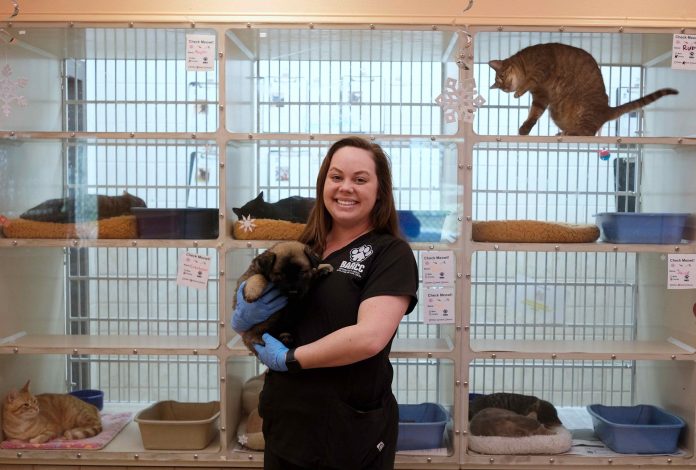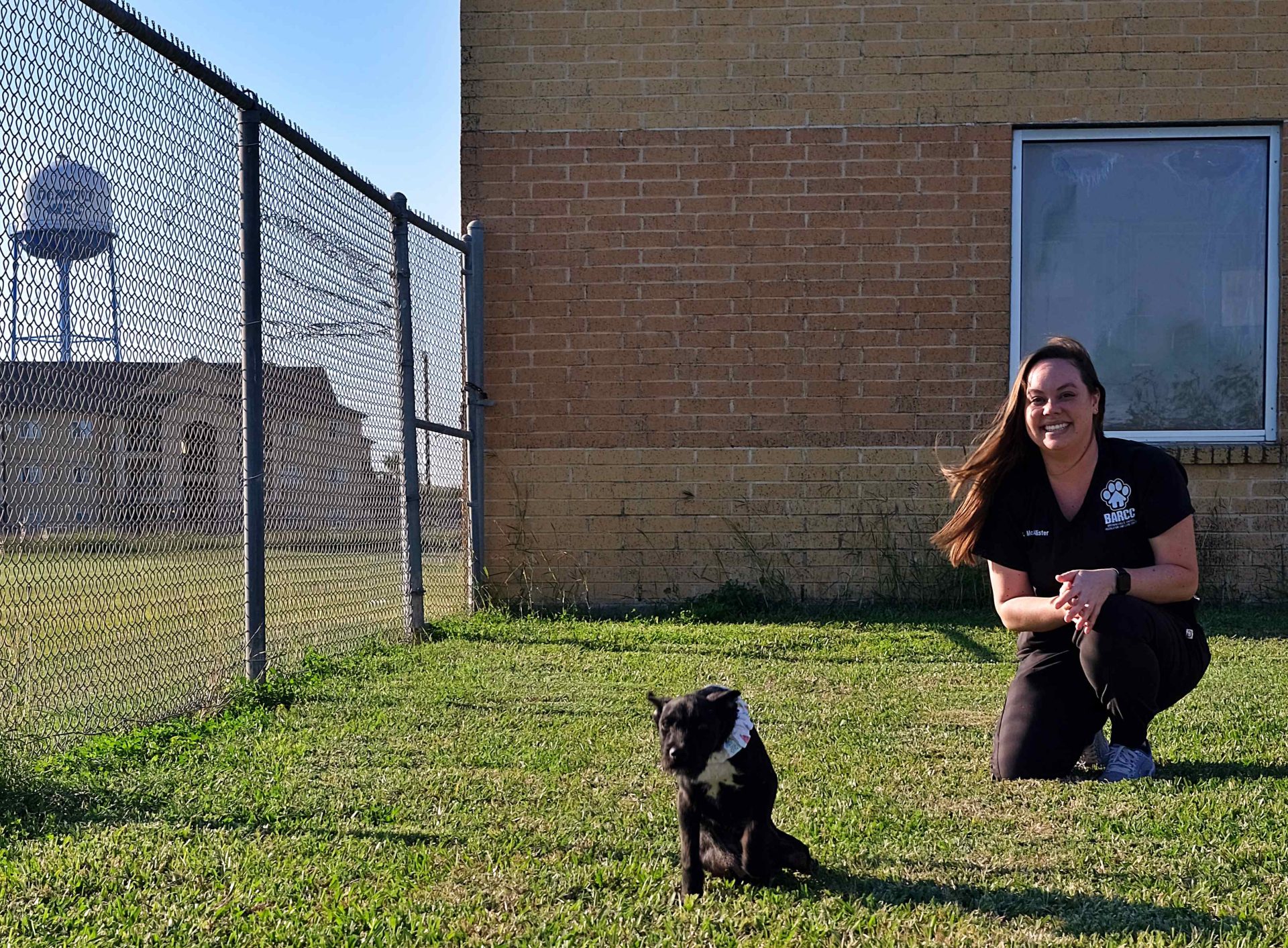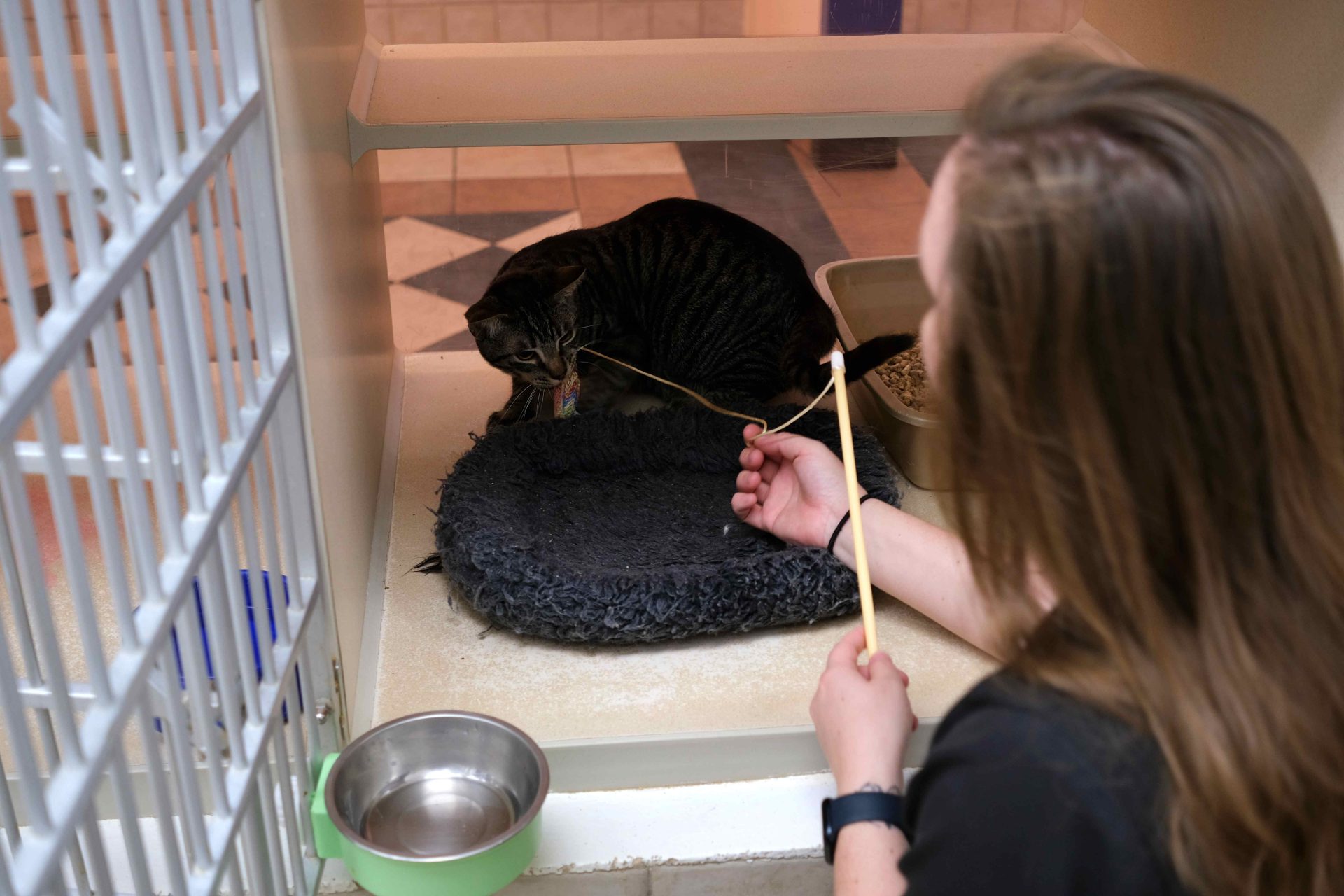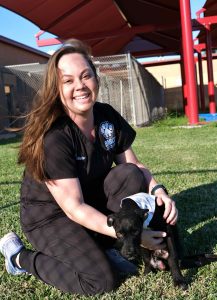
|
Only have a minute? Listen instead
Getting your Trinity Audio player ready...
|
The Brownsville Animal Regulation and Care Center in Olmito has seen a dramatic increase in the number of dogs and cats spared from euthanasia over the last year.
For example, in November the shelter’s save rate was 81%, a 69% increase over November 2022, when the save rate was only 12%. Also in November, BARCC adopted out 112 pets, nearly double the average number of adoptions in the months prior, according to Best Friends Animal Society, a Utah-based nonprofit that has been collaborating with the Brownsville shelter to help implement best practices to save more animals.
In 2022, four of the county’s top 10 animal shelters with the worst “lifesaving gaps” were in Texas, with Brownsville among them, Best Friends said in a Dec. 20 announcement celebrating BARCC’s accomplishment.
“In 2022, nearly 20 percent of the total number of animals killed in Texas happened in Cameron and Hidalgo counties, and throughout the Rio Grande Valley more than 13,000 animals were killed,” said the group. “From May through November of (2023), BARCC has saved 2,152 more animals compared to last year. That’s an average of 307 fewer dogs and cats losing their lives each month.”

Taylor Lefebvre, of Best Friends, who has been embedded with BARCC for eight months of a one-year stint, said that each of the last eight months had seen at least a 50% increase in the number of animals saved compared to the same months the previous year. Most months it’s been far in excess of 50% more animals saved, she said.
“It is equating to usually between 300 and 500 less animals being euthanized in the shelter every month than the year prior,” Lefebvre said.
A major reason for that: BARCC is now able to treat sick and injured animals when they come in rather than automatically marking them for destruction, thanks in part to surgical equipment donated by Best Friends.
“I think one of the biggest improvements that we’ve done is there’s medical staff now to treat animals, like the leg amputations and eye enucleation (removal),” said Dr. Logan McAllister, BARCC veterinarian. “The surgical capacity that we have now has really opened up those doors for those animals that didn’t have live outcomes before.
“We just got surgical equipment the middle of last year, so since then we’ve really been able to increase that capacity of just those simple procedures that can cure these injuries.”
The shelter is now treating parvo, ringworm, respiratory infections and other conditions “that pets can absolutely recover from but that previously were a euthanasia sentence here,” Lefebvre said.
“We are treating those animals and giving them that chance of a happy ending,” she said.

Another big change is the implementation of BARCC’s community cat program. Historically, homeless cats brought to the shelter typically did not make it out alive. Now, eligible, outdoor-dwelling community cats brought in are spayed and neutered, vaccinated, ear-tipped and returned to their respective neighborhoods, Lefebvre said.
“We know that in almost all of these cases there are community members who are feeding these cats and taking care of them,” she said. “We just don’t want them procreating, which is a huge problem down here. It’s warm all year so we’re seeing kittens come in all year, so we want the cats who are living in the community to be vaccinated and not procreating anymore. Starting that community cat program has been really huge.”
The former approach was just to round up large numbers of cats and euthanize them, ineffective since it merely freed up up resources for an equal number of other cats to thrive, McAllister said. The community cat program, on the other hand, attacks the root of the problem, she said. The program kicked off about three months ago with BARCC’s own cat population. The shelter has details on each animal that allows them to be returned to their respective neighborhood colonies, usually 48 hours after surgery, McAllister said.
Lefebvre said the shelter has also improved its adoption and fostering processes to make BARCC a place members of the community feel welcome.
“We want the shelter to be a place where people go to look for their next pet,” she said. “Where they come in, they know that the adoption procedure is going to be straightforward, that the pet that they are adopting is going to be healthy, friendly, vaccinated, micro-chipped, and spayed and neutered.”
Also, now when someone comes in with a dog or cat they want to give up, BARCC staff talk to that person about possible ways to keep the animal at home — perhaps with the shelter providing food or other resources and “really getting to the heart of the issue of why they might need to give up their pet,” Lefebvre said.

“Because we are still operating at full capacity,” she said. “Every single one of our kennels is full and we still have animals coming in every day. So as much as we can do to divert intake, we want to look at all of those options before the animal comes through these doors.”
Much progress has been made, but it’s only the beginning in terms of addressing the systemic issues causing the city’s severe pet overpopulation problem, Lefebvre said.
“It’s definitely going to take the full community to really come together and fix some of this,” she said.
McAllister said the average cost of spaying and neutering — from $500 to $600 per animal — is tough for many residents to afford, especially those keeping multiple pets.
“We’re trying to look into low-cost options to be able to provide to the public, but that’s probably at least two to five years down the road for the shelter to be able to provide those services,” she said. “Right now they only have one veterinarian on staff, and only veterinarians can perform surgery. So it’s just finding that capacity, making that network of … other vets that are willing to spend some of their time just to do some community work.”
BARCC has begun offering monthly vaccine clinics for residents to get their pets free or low-cost rabies, distemper and parvo vaccines, plus free micro-chipping, in order to create a healthier pet community in general. Preserving the lives of more cats and dogs, meanwhile, costs more money, McAllister said.
“Absolutely the financial need is great,” she said. “Saving lives costs more than euthanizing at the end of the day. It just does. We have more animals on site now that need medical care, to be fed and given enrichment. Having a budget to be able to do those things and having the staff to care for those animals is a vital part of lifesaving.”




